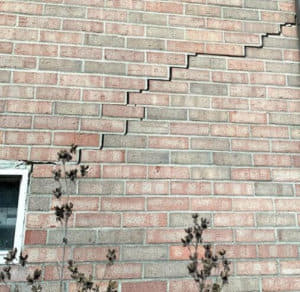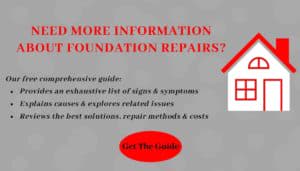Fixing a Drafty Window or Door

Originally posted 1/7/2019, revised 3/11/2021
On a windy day, you may notice that those gusts of air no longer stop at your exterior walls. Some of that air is now being pushed into your home around window frames or doors, disrupting your thermostat settings and making your HVAC work harder.
A DIY fan will initially replace the weather stripping, or re-apply caulking, which should resolve the issue for a little while. But these repair methods are only stopgap measures. (Pun intended!) If you don’t address the cause of the problem, it’s going to happen again.
Acculevel is a family-owned and operated company that specializes in foundation repairs. Since our start in 1996, we’ve helped tens of thousands of homeowners restore strength and stability to their houses. Based out of Rossville, Indiana, we operate on the philosophy of treating others how we want to be treated.
We believe homeowners deserve open and honest communication. In this article, we’re going to explain why drafts develop around doors or windows, and how these issues can be addressed and prevented from happening again.
Evaluate the Room(s) With the Draft
Let’s take a closer look at the area of your home where the drafts are intruding. Are there any cracks in the drywall around the doors or windows? Do any of the doors or windows “stick?” This can be a misleading term; sticking can mean the window/door won’t stay open, is difficult to close, or will only partially open.
After you’ve noted any issues in the room with the draft, go under the room in your basement or crawl space. Do you see any cracks in the foundation, either inside or along the outside? These items are all indicators that your foundation is settling.
 This photo was taken by an Acculevel project manager during a routine free estimate. This crack is a sign of foundation settling.
This photo was taken by an Acculevel project manager during a routine free estimate. This crack is a sign of foundation settling.
How Does Settling Occur?
Settling can be a natural process: the weight of your house slowly presses itself against the ground and sinks in miniscule amounts. But anytime nature is involved, there’s an element of unpredictability.
Heavy rains can saturate the soil, allowing it to compact more in some areas than others. The rain can also erode soil under your foundation. The freeze-and-thaw cycle that we experience in Midwestern winters can also play a part, if frost heaves or adfreezing develop.
Drought is another natural force that can cause settling. When the ground around your home dries out, it shrinks away from the foundation. This can “pull” soil from under the foundation, creating an effect similar to erosion.
Settling in your foundation becomes a problem when one section sinks more than the others do. This uneven movement stresses the building materials, which are not flexible. Concrete and drywall crack under the pressure, and the wooden framing of your house twist and strain- which is why windows and doors start to “stick.”
How Do You Repair a Settling Foundation?
Piers are used to stabilize your home’s foundation, preventing it from sinking any farther. When possible, piers can also be used to lift the foundation back towards its earlier position. There are two types of piers that can be installed, helical and push piers. Acculevel has installed both kinds, but we believe that helical piers are the best and safest choice for residential properties.
You can learn more about helical piers and how they work in this article, which also includes the costs and installation method.
Want to Learn More about Foundation Repairs?
Please review our comprehensive foundation guide, which provides detailed explanations of what causes foundation problems, symptoms you should watch for, how to repair them, and what these repairs can cost.
We designed this guide to be a resource for homeowners; feel free to bookmark it, read the sections that seem relevant to you, or review the entire document to learn more about why we encourage homeowners to perform your own foundation inspections twice a year.

